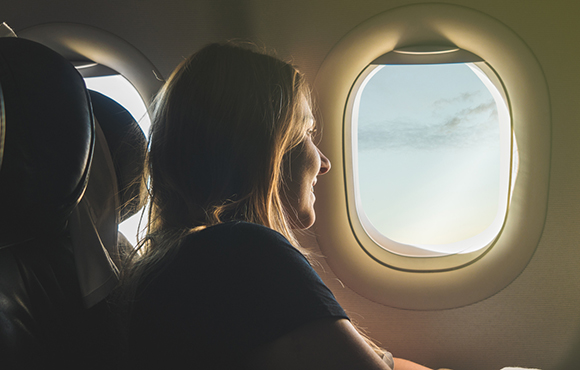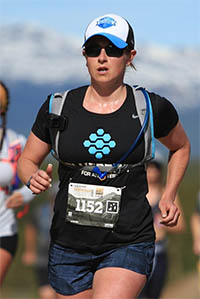
Exploring new places is always fun, but getting there? Not so much. Our bodies don't like when we change time zones, go to different altitudes or eat questionable airline food. Our built-in routines, known as circadian rhythms, can get thrown off during air travel. Jet lag is the series of symptoms that occur when our internal body clock is disrupted. These symptoms include everything from sleep disruption to indigestion, all of which can cause trouble on race day. Try these tips to lessen the effects of jet lag so you can nail your race goals.
Preparing for the Flight
Pick a good flight and seat: If your flight is less than four hours, take an evening flight and stay up until 10 p.m. local time to help reduce jet lag. Western destinations are preferable to eastern ones. This is because our body's cells operate on a 24.5-hour clock, so extending the day—flying west—is easier than shortening the day—flying east. Lastly, pick a window seat so you have something to lean against for sleep, as well as one that's away from heavy foot traffic areas like the bathroom.
Avoid caffeine and alcohol: This may seem obvious, but drinking caffeinated or alcoholic beverages can keep you up and dehydrate you. Stick with water or herbal tea leading up to your flight.
Adjust your schedule and relax: If your destination is no more than three hours behind or ahead, adjust your schedule during the few days leading up to your flight. You can do this by using a zeitgeber (a time cue), such as light, to help synchronize your internal clock. To help align in the new time zone, use the blue light filter on your digital device. Lastly, take some time to relax in the days before your trip.
During the Flight
Hydrate often: Keep avoiding caffeine, alcohol and other sugar-filled drinks, and stick to water. Drink 8 ounces of water every hour on the plane.
Align your eating schedule or fast: If you can, try to fast during the flight. Airplane food is often questionable and usually processed. Digesting food is hard work for your stomach and even more challenging when you are sitting in one position thousands of feet in the air. Give your gut a break or eat a light snack. If you do need to eat, try to wait for your typical meal time in the new time zone.
Stay moist: The humidity level in most planes is around 15 to 25 percent, which is dryer than the Sahara Desert. Needless to say, things are going to dry up a bit, so bring eye drops, nasal spray, lotion and Chapstick to keep things moist.
Sleep if you can: If you have an overnight flight, try to get some shuteye with a sleep mask and earplugs. If you do choose to sleep, make sure your seat belt is visible to flight attendants, so they don't have to wake you up to check if the plane experiences turbulence during the flight.
After the Flight
Get some alone time: It might be tempting to hang out with friends or go to a team dinner the moment you land, but take some time to relax and reset. This could include a bath with some Epsom salt (pack some in your checked bag), unpacking your suitcase or going for a light walk.
Follow routine cues: External cues can help align our body's internal clock. This means if you are a morning runner and you arrive at night, don't go for a short jog. Wait until morning to start your workout routine. If you drink a cup of herbal tea before you go bed each night, bring your favorite tea with you.
No napping: Yeah, it is terrible, but you should avoid the afternoon nap the first three to four days. Napping will reinforce the old time zone and will most likely lead to an extended siesta. This is the time to caffeinate, walk around outside and get familiar with your surroundings.


